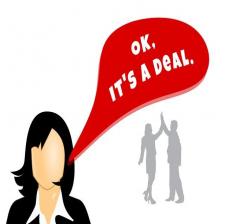
It has been 11 years since Crocs emerged as an instant hit in the casual shoe market place, taking that sector by storm. Today, however, the public has lost much of its love for the clunky, rubbery, and sometimes even dangerous foot-gear. The internet is filled with bloggers complaining about this poor shoe- there is even a YouTube video of a woman cutting up yellow Crocs and then churning the pieces in a blender.
Despite the bad publicity and blogger dissing the clog still makes up 47 percent of sales for Crocs the company. Even though going up escalators can be challenging in the clogs, kids and healthcare workers are still enamored of them. It is still not good enough for CEO John McCarvel, who would like to see twofold increase in sales over the next five years. In order to engineer such improved sales Crocs has to convince consumers to buy their other styles, including foam-bottomed wedges, sneakers, and ballet flats. And if anyone wants Crocs-clogs, they will have to go get them at the back of the store, first passing by all the other Crocs newer, more stylish footwear.
McCarvel has been the CEO since 2010. He has been praised for re-invigorating what had become a moribund company and making it once again profitable. Sales climbed by 12 percent last year, reaching $1.12 billion, and their net income was the largest since 2007, yet investors are cautious. Back in 2007 investors watched gleefully as share prices skyrocketed past $70, rendering Crocs a market value of $6 billion. Then, just one year later, with pressure from copycat Crocs and the brand-damaging practice of selling Crocs everywhere, including at gas stations, disaster struck. By November 2008 shares were trading for less than $1. Today shares of Crocs (CROX) are going for $16.
“The story is certainly different than it was years ago, and some people have yet to grasp what it is now,” says Michael Swartz, an analyst with SunTrust Robinson Humphrey.


